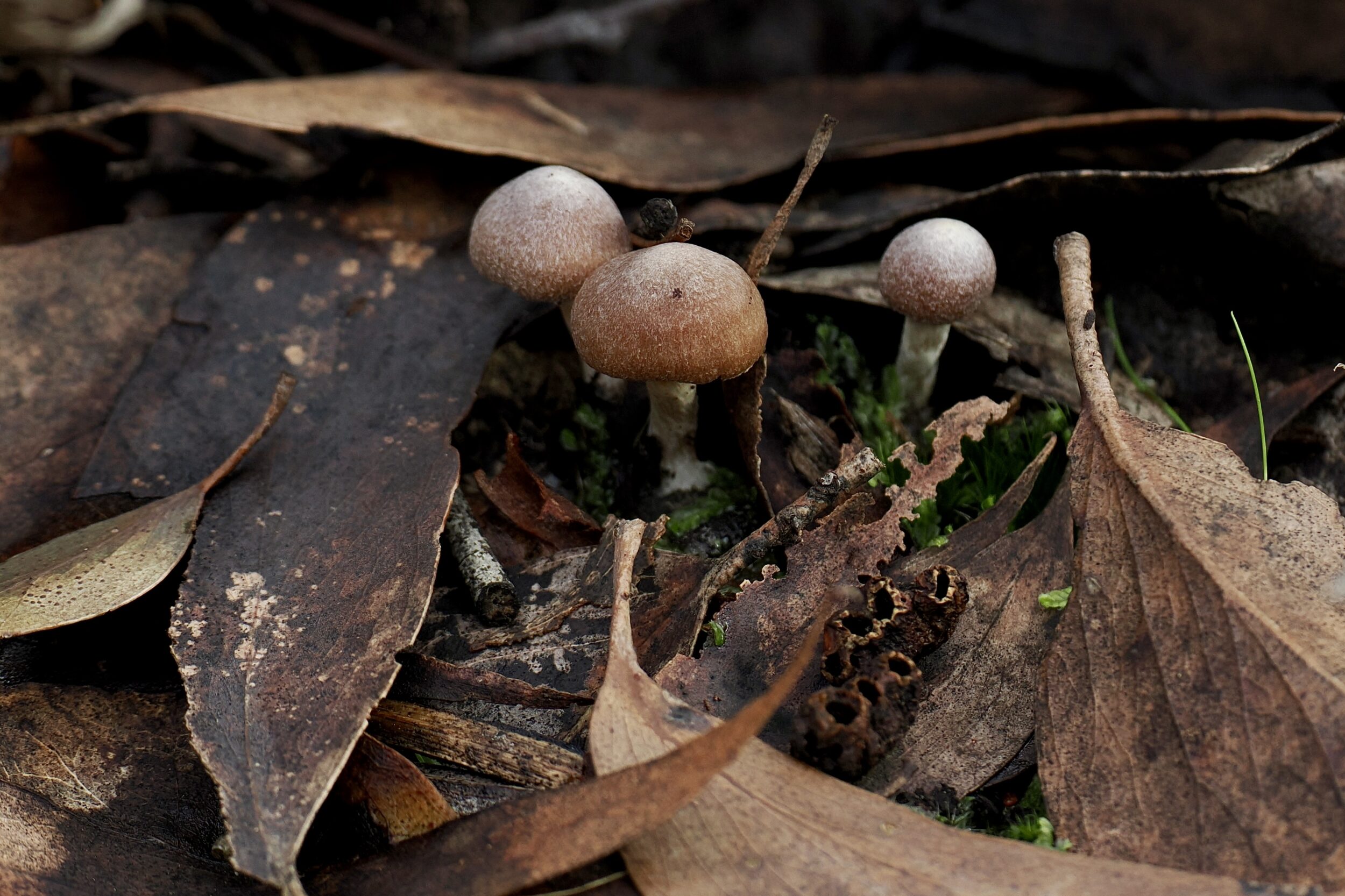Most of the world’s fungal mass are mycelia – tubular filaments/threads which “network”, forming mycelium.
Reminiscent of hair or neurons, those filaments/threads are called hyphae.
You won’t see mycelium in this series – it is an invisible presence, within the earth, timber and leaf litter.
However, it is worth remembering that fungi are like icebergs – what we see is only a small portion of their selves.
Some individual mycelium networks are decidedly modest in size.
Others are “our” planet’s largest living land-dwellers.
Fungi are definitely not plants.
They – most especially, their mycelium – are, however, vital to many plants’ very existence.
In some species, mycelia produce spores, directly.
Others produce fruiting bodies, such as this post’s petite mushrooms.
The fruiting bodies – crudely put, fungus genitalia – are the only “bits” that most humans notice.
Each one of this post’s mushrooms is dwarfed by any one of the fallen leaves on the stringybark forest’s floor.
That is certainly not true of every fungal fruiting body that emerges on this particular forest floor.
All photos in this series are copyright Doug Spencer; all were taken on 20 June 2023 in Deep Creek National Park’s old-growth stringybark forest.
